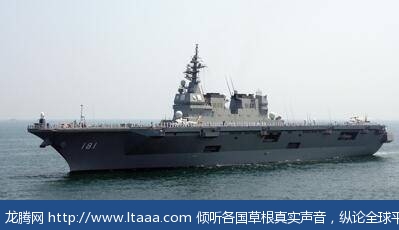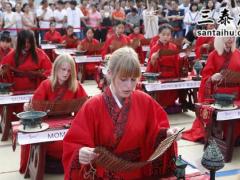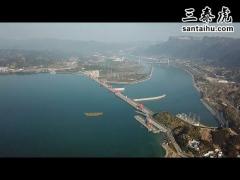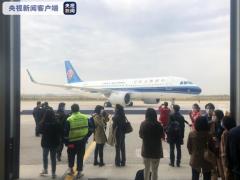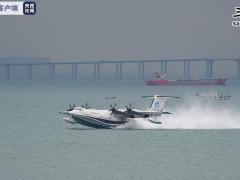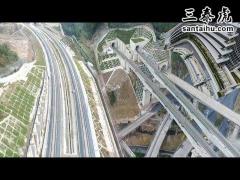日本强大海军主导亚洲的全部原因 [美国媒体]
日本的潜艇部队是海上自卫队的另一个主要组成部分。日本正在建造一支由二十二艘潜艇组成的部队,以对付成长中的中国海军。这支舰队将包括两类潜艇,较老的亲潮级和较新的、更加致命的苍龙级。
The Buzz
热议
All the Reasons Japan's Mighty Navy Dominates Asia (And Not China)
日本强大海军主导亚洲的全部原因(而不是中国)
Kyle Mizokami
凯尔 沟上
May 31, 2017
2017年5月31日
Japan’s submarine force is another major component of the MSDF. Japan is building up to a force of twenty-two submarines to provide great numbers against a growing Chinese Navy. The fleet will consist of two classes of submarines, the older Oyashio class, and the newer, deadlier Soryu class.
日本的潜艇部队是海上自卫队的另一个主要组成部分。日本正在建造一支由二十二艘潜艇组成的部队,以对付成长中的中国海军。这支舰队将包括两类潜艇,较老的亲潮级和较新的、更加致命的苍龙级。
At 4,100 tons submerged, the Soryu submarines are Japan’s largest submarines since the I-400 class of World War II. The subs are equipped with Stirling air independent propulsion systems, capable of powering the submarine silently underwater for up to two weeks, and can make thirteen knots surfaced and twenty knots submerged.
4100吨的潜航排水量,苍龙潜水艇是二战以来日本最大潜艇(从伊400型潜舰开始),潜艇采用了斯特林空气独立推进系统(AIP),能够在水下默默的为潜艇提供两个星期的动力,能够完成13次的上浮和20次的下潜。
The Soryus are equipped with six 533-millimeter bow-mounted torpedo tubes, with a mix of twenty Type 89 heavyweight homing torpedoes and American-made Sub-Harpoon missiles. They can also lay mines to block the many straits an invasion force would attempt to force.
苍龙级潜水艇配备六具533毫米艏鱼雷发射管,混配20枚89式重型鱼雷和美制鱼叉(潜艇型)导弹。他们还可以在许多海峡布雷,阻止那些入侵部队的侵入。
The best navy in Asia has a total of 114 warships and 45,800 volunteer personnel. It has a large fleet of fast, powerful destroyers, thoroughly modern diesel-electric attack submarines, and amphibious ships that can haul tanks and other ground forces. It can hunt submarines, square off against invasion fleets, and shoot down enemy ballistic missiles. Despite all of that firepower, this is not in fact a navy at all, but an armed cohort of civil servants.
亚洲最好的海军由 114艘舰艇和45800志愿者组成,它拥有大量快速强大的驱逐舰,完全现代化的柴油发动机攻击潜艇,和可以运载坦克和地面武装的两栖舰艇。它可以猎潜,与入侵舰队对抗,击落敌人的弹道导弹。尽管有如此强大的火力,但它实际上并不是一支海军,而是一群全副武装的公务人员。
Technically, the Japan Maritime Self-Defense Force is a “self-defense force” designed to overcome the country’s constitutional limits on armed forces. It is, ship for ship, the best navy in Asia.
技术上讲,日本海上自卫队是一支"自卫部队",设计用来克服国家宪法对武装力量的限制。但船归船,路归路,它是亚洲最好的海军。
The main component of the MSDF are its fleet of forty-six destroyers and frigates—more than that those fielded by the United Kingdom and France combined. Organized into escort flotillas, Japan’s tin-can navy is designed to defend the country from invasion, help retake Japanese territory and keep the sea-lanes open.
日本海上自卫队主要由56艘驱逐舰和护卫舰组成--它远远超过了英国海军和法国海军同类舰艇之和。组织护航编队,日本的罐头海军(译者注:翻译有点疑惑,怀疑为自谦的说法,形容装备老旧)被设计为保证国家不受侵犯,帮助夺回日本领土,保持航道开放。
The most powerful of Japan’s surface combatants are the Kongo class of guided-missile destroyers. The four ships—Kongo, Kirishima, Myoko and Chokai—are all named after battleships and cruisers of the Imperial Japanese Navy, a practice once generally avoided but becoming more popular as the memory of World War II fades.
日本最强大的水面战斗力量是金刚级导弹驱逐舰。四艘军舰--金刚 雾岛 妙高和鸟海 --名字都是来自日本帝国海军的战列舰和巡洋舰,随着二战记忆的褪去,这种命名的方式曾经避免使用,而如今变得越来越流行。
The Kongo destroyers are based on the original U.S. Navy Arleigh Burke–class Flight I destroyers in general shape and armament. Like the Burke class, the heart of the ship is the Aegis Combat System, capable of tracking and engaging area air-defense threats. It also provides a national ballistic-missile defense system for all of Japan—just two Kongos can protect most of the country.
金刚级驱逐舰是基于美国海军阿力 伯克级战斗I型驱逐舰为外观原型和武器装备原型。正如伯克级,舰艇的心脏是宙斯盾作战系统,能够跟踪目标和参与区域防空。它也可以为全日本提供国家级导弹防御系统--仅仅两艘金刚级驱逐舰就能保护国家的绝大部分。
Armament for the destroyers is primarily defensive, with ninety Mark 41 vertical launching missile silos, split between the fore and aft decks. The Kongos carry SM-2MR air defense missiles and SM-3 Block IB ballistic missile interceptors, the latter soon to be replaced with the newer Block IIA version. The destroyers also carry one five-inch main gun, eight Harpoon antiship missiles, six antisubmarine torpedo tubes and two twenty-millimeter Phalanx close-in weapon systems.
驱逐舰部队主要是用于防御,带有90个马克41型垂直导弹发射装置,被分别布置在前后甲板。金刚级驱逐舰携带SM-2MR防空导弹和标准3 Block IB型导弹 作为导弹拦截系统,不久后会替换为Block IIA型。驱逐舰还配备一个5英寸主炮,八枚鱼叉反舰导弹,六个反潜鱼雷发射管和两个二十毫米的密集阵近距离武器系统。
Another formidable Japanese ship is the JSIzumo. At twenty-seven thousand tons fully loaded and more than eight hundred feet long, Izumo has a full-length flight deck, an island for controlling flight operations, aircraft elevators and a hangar that spans the length of the ship.
另外一个强大的日本军舰是出云号。满载二万七千吨的排水量和超过800英尺长,出云号有一个全通式飞行甲板,一个控制飞行操作的舰岛,飞机升降机和一个跨越船体长度的机库。
While that sounds like a traditional aircraft carrier, Japan insists the ship is actually a “helicopter destroyer.” Izumo can’t carry fixed-wing fighter jets but it can carry up to fourteen helicopters. These helicopters and their missions can vary, from antisubmarine warfare to minesweeping to helicopter airmobile assault. This makes the Izumo a flexible platform capable of taking on a variety of tasks. A second ship of the class, Kaga, is currently under construction.
虽然这听起来像一个传统的航母,日本坚持这艘船实际上是一个“直升机驱逐舰”。出云号不能搭载固定翼战斗机,但它可以搭载十四架直升机。这些直升机和它们的任务各种各样,从反潜战到 扫雷 到 直升机机降突击。这使得出云号成为一个能执行各种各样任务的多适应性平台。第二级别的舰船,加贺,当前正在建设中。
Japan’s submarine force is another major component of the MSDF. Japan is building up to a force of twenty-two submarines to provide great numbers against a growing Chinese Navy. The fleet will consist of two classes of submarines, the older Oyashio class, and the newer, deadlier Soryu class.
日本的潜艇部队是海上自卫队的另一个主要组成部分。日本正在建造一支由二十二艘潜艇组成的部队,以对付成长中的中国海军。这支舰队将包括两类潜艇,较老的亲潮级和较新的、更加致命的苍龙级。
At 4,100 tons submerged, the Soryu submarines are Japan’s largest submarines since the I-400 class of World War II. The subs are equipped with Stirling air independent propulsion systems, capable of powering the submarine silently underwater for up to two weeks, and can make thirteen knots surfaced and twenty knots submerged.
4100吨的潜航排水量,苍龙潜水艇是二战以来日本最大潜艇(从伊400型潜舰开始),潜艇采用了斯特林空气独立推进系统(AIP),能够在水下默默的为潜艇提供两个星期的动力,能够完成13次的上浮和20次的下潜。
The Soryus are equipped with six 533-millimeter bow-mounted torpedo tubes, with a mix of twenty Type 89 heavyweight homing torpedoes and American-made Sub-Harpoon missiles. They can also lay mines to block the many straits an invasion force would attempt to force.
苍龙级潜水艇配备六具533毫米艏鱼雷发射管,混配20枚89式重型鱼雷和美制鱼叉(潜艇型)导弹。他们还可以在许多海峡布雷,阻止那些入侵部队的侵入。
Finally, Japan has three Osumi-class tank landing ships. The ships resemble small aircraft carriers, with a 130-meter long flight deck stretching the length of the ship. That’s where the resemblance ends, however, as the Osumi ships lack aircraft elevators and a hangar. The ships were designed to rapidly move Ground Self-Defense Force tanks between the main islands of Japan, reinforcing any of them against invasion.
最后,日本有三艘大偶级坦克登陆舰。这种舰船类似于小型航空母舰,130米长的飞行甲板延伸整个船体。这就是和航空母舰相似的地方。然而,大偶级登陆舰缺乏航母飞机升降机和机库。这些舰只只是设计为在日本岛屿间快速移动自卫队的地面坦克,以加强岛屿的抗入侵能力。
The Osumis can carry up to 1,400 tons of cargo, fourteen Type 10 or Type 90 tanks, and up to one thousand ground troops. They are equipped with well decks and American-designed LCAC hovercraft, allowing them to float out heavy equipment and sent them to shore. This capability is especially useful in light of Japan’s new dynamic defense strategy, which calls for amphibious forces capable of taking back islands seized by a hypothetical enemy.
大偶级登陆舰可以携带1400吨货物,14辆10式主战坦克或90式主战坦克,和高达1000人的地面武装。它们装备优质甲板和美国设计的LCAC气垫船,LCAC气垫船可以搭载重型装备并运送到岸边。这种能力特别适用于日本新的动态防御战略,该战略要求两栖部队能够夺回假想敌占领的岛屿
One final reason why Japan’s navy is the best in Asia?
日本海军在亚洲最优秀的最后原因是什么?
On March 11, 2011, a magnitude 9.0 earthquake struck off the coast of northern Japan.
2011年3月11日,日本北部海岸发生里氏9级地震
Vice Admiral Hiromi Takashima, commandant of the Yokosuka Naval District, immediately assumed temporary command of the entire MSDF and ordered all available ships north to the earthquake zone. The first ship left just forty-five minutes after the earthquake. Another seventeen ships packed with relief supplies departed within eighteen hours, some with only partially recalled crews. This ability to rapidly sortie the fleet with virtually no notice was perhaps the true test of the MSDF’s professionalism and efficiency.
副海军上将博高岛,横须贺海军军区指挥官,立即发布给整个日本海上自卫队的临时命令,命令所有可用的舰船朝北开向地震区域,地震45分钟之后,第一艘船只到达地震区域。其他17艘舰艇装载着救援物资在18小时内赶到,部分船只只有部分召回船员。这种舰队快速突袭的能力实际上是日本海上自卫队的专业和高效的真正测试。
Kyle Mizokami is a defense and national security writer based in San Francisco who has appeared in the Diplomat, Foreign Policy, War is Boring and the Daily Beast. In 2009 he cofounded the defense and security blog Japan Security Watch. You can follow him on Twitter: @KyleMizokami.
凯尔 沟上是一位旧金山的 国防和国家安全作者,他的文章发表在 <<外交家>> <<外交政策>> <<战争是无聊的>> <<每日野兽>>等媒体上。2009年他创立了 国防和安全博客 日本安全观察。你可以关注他的推特
@KyleMizokami.
版权声明
我们致力于传递世界各地老百姓最真实、最直接、最详尽的对中国的看法
【版权与免责声明】如发现内容存在版权问题,烦请提供相关信息发邮件,
我们将及时沟通与处理。本站内容除非来源注明五毛网,否则均为网友转载,涉及言论、版权与本站无关。
本文仅代表作者观点,不代表本站立场。
本文来自网络,如有侵权及时联系本网站。
图文文章RECOMMEND
热门文章HOT NEWS
-
1
Why do most people who have a positive view of China have been to ...
- 2
- 3
- 4
- 5
- 6
- 7
- 8
- 9
- 10
推荐文章HOT NEWS
-
1
Why do most people who have a positive view of China have been to ...
- 2
- 3
- 4
- 5
- 6
- 7
- 8
- 9
- 10
